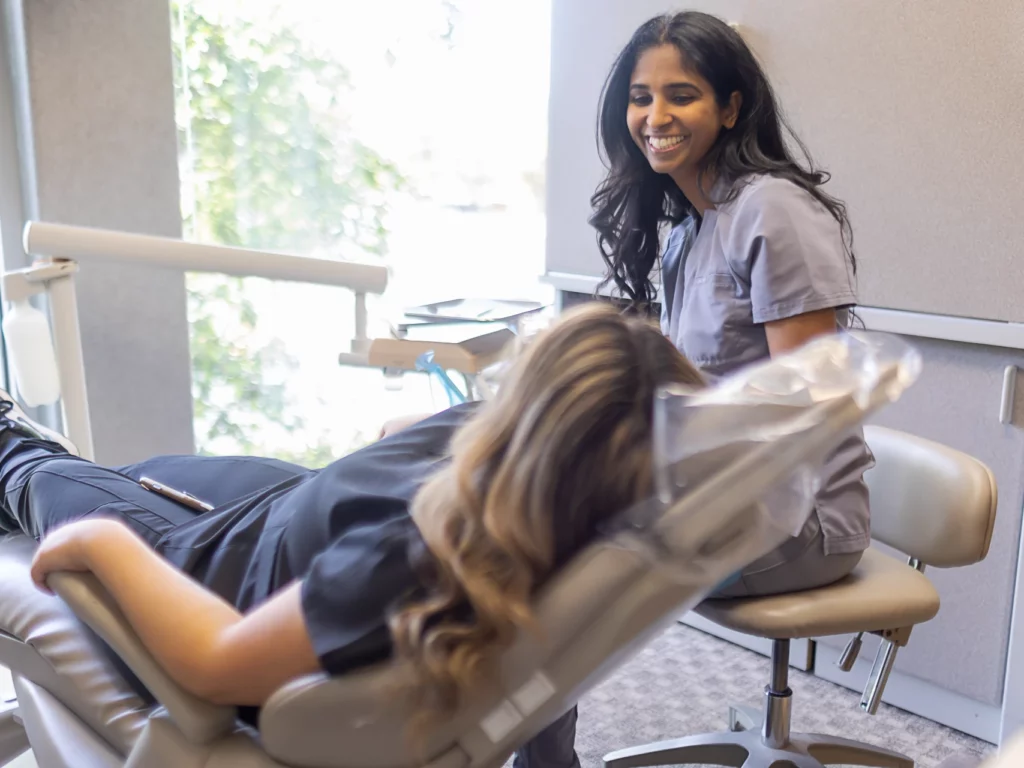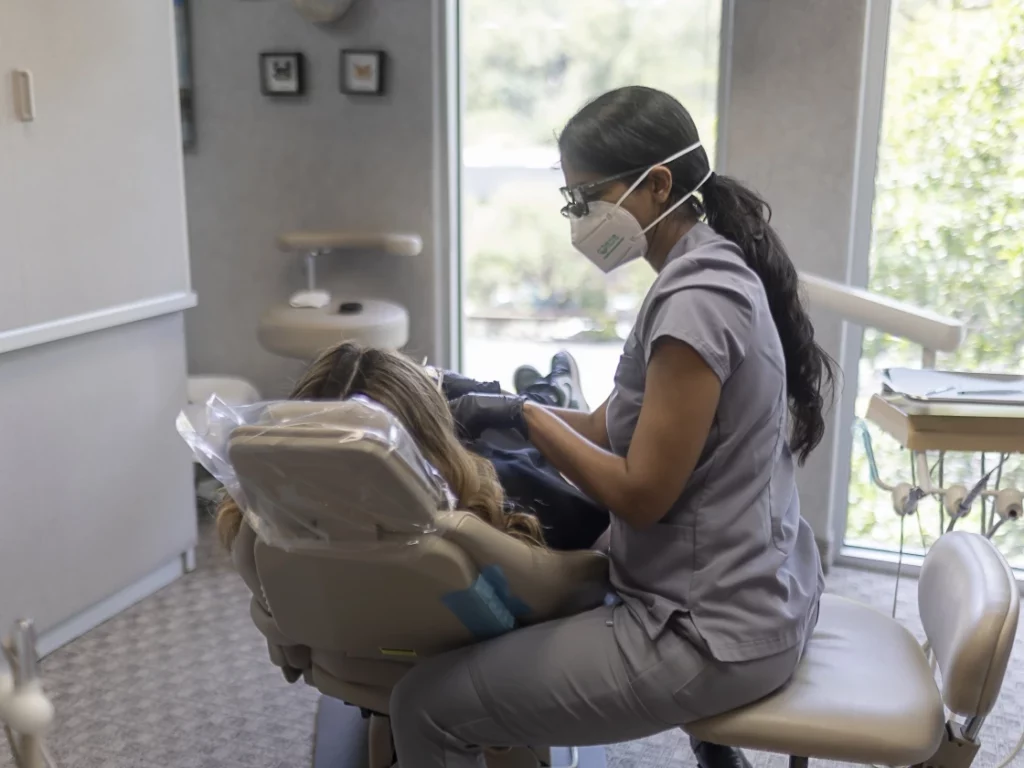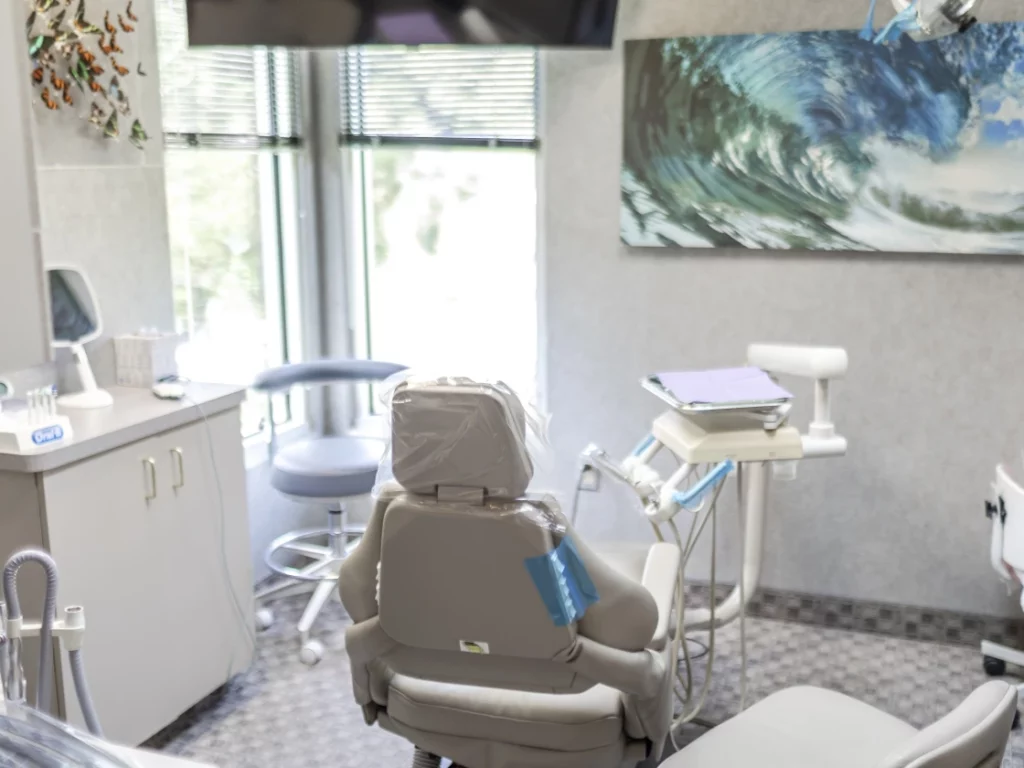
Tooth extractions may be necessary if you are experiencing:
Dr. Sandhu and Dr. Dhillon alway strive to preserve and restore the natural structure of your teeth. However, extensive disease, decay, or trauma may lead to a medically necessary tooth extraction. If you’re experiencing any of the above symptoms, we recommend giving us a call at (925) 253-0165 or you can book your appointment online right away. Dr. Sandhu or Dr. Dhillon will provide their expert opinion and discuss all potential treatment options for your unique case.
We do most extractions right here in our office, helping you avoid the extra time and costs associated with a referral.

Modern Technology | We utilize the latest advancements in dental technology to treat patients more effectively and in fewer visits, saving you time and money.
Comprehensive Pre and Post-Operative Care | You’ll receive a customized treatment plan and detailed pre/post operative instructions to help ensure a smooth recovery.
Pain Management | We offer a variety of sedation options to decrease pain or anxiety.
Transparent Pricing | You’ll feel comfortable knowing exactly how much your procedure will cost. We also offer financing options!
Need to see a tooth extraction dentist in your area but don’t have insurance? Not a problem! Patients who would like to break their treatment costs into affordable monthly payments can benefit from working with a financing company. Applying for financing is quick and easy, and you’ll receive an instant decision so you can proceed with your treatment promptly.
If you’re interested in seeing a tooth extraction dentist but don’t have insurance, call Orinda Family Dentistry today at (925) 253-0165 to speak with our insurance coordinator who can provide more information about our financing options.
We accept most PPO plans, and our treatment coordinator will be able to provide an estimate of what your plan may cover. We’re also happy to bill your dental insurance plan on your behalf to help you maximize your benefits. Click here to learn more about our insurance and financing options.
While it may be scary to hear that you need a tooth pulled, our compassionate dental team uses gentle techniques, modern technology, and anxiety-reducing sedatives. This ensures that our patients experience a pain-free extraction with minimal risk of complications.
The first step in the removal process is to tell Dr. Sandhu or Dr. Dhillon if you’ll require anxiety-reducing sedatives, such as oral sedatives. If so, our dentists will write you a prescription for an oral sedative that you must pick up at a pharmacy of your choosing and take before your appointment.
Next, one of our dentists will administer a local anesthesia to numb the extraction site. Once you are relaxed and sufficiently numb, our dentists will skillfully remove the damaged tooth. Teeth extractions can be completed very quickly and painlessly.
After your tooth has been removed, our dentists will either pack the extraction site with gauze or close the wound with a few, small stitches. At this point, our dental team will monitor you to ensure that the sedatives are wearing off before letting a friend or family member drive you home.
In most cases, a tooth extraction is used only as a last resort if other restorative dental procedures are unsuccessful. Common reasons why you might need a tooth pulled include:
At Orinda Family Dentistry, our team prioritizes your health. Therefore, we will only recommend a tooth extraction if we have exhausted all other options. For some patients, tooth removal may be the best solution to improve their quality of life and save their oral health.
At Orinda Family Dentistry, we will also discuss the ways we can replace the tooth before moving forward. Dental implants, bridges, or dentures, may be good options for replacing the missing tooth and we will be sure to discuss the benefits of each of them as we figure out the best choice for you moving forward to restore your smile!
In general, tooth extractions are very safe. However, there are some cases in which a patient should disclose past medical history to our dental team to ensure patient safety. For example, our dentists need to know if you have:
If you have any of these conditions, please let our dental team know immediately. Knowing this information will help us mitigate complications, ensuring a safe and successful extraction.
Proper aftercare is extremely important following an extraction. To reduce the risk of infection and improve recovery:
Once the wound is fully healed, patients have a wide variety of tooth-replacement options to choose from, such as dental implants, bridges, or dentures. It is essential to replace a missing tooth to prevent damage to other teeth from biting forces/uneven pressure, avoid tilting or shifting of remaining teeth into the gap.
While our immediate concern is the short-term management of your care, we will also discuss your long-term plans for replacing missing teeth. Leaving a space is always an option, but spaces in your smile can create appearance and function challenges that are important to consider. Teeth slowly shift or migrate into open spaces and minimizing the effects of an unbalanced bite now can prevent issues later in life.
You’ve come to the right place! Give Orinda Family Dentistry a call or book your appointment online today to see how we can help with your extraction needs. Dr. Sandhu or Dr. Dhillon will perform an oral evaluation and discuss all of your options with you. If an extraction is necessary, Dr. Sandhu or Dr. Dhillon will perform the procedure with your comfort in mind, going the extra mile to limit any pain.
We’re here to help! At Orinda Family Dentistry, we understand the urgency associated with emergency tooth extractions. As such, we keep open slots for emergency dental appointments. Give us a call or schedule your appointment online right away. We do our best to reply at all times of the day…even after hours and on weekends!
Give Orinda Family Dentistry a call ASAP! Prompt dental care for an emergency tooth extraction is crucial to prevent further damage or complications. We keep open slots for emergency dental appointments so give us a call or schedule your appointment online right away. We do our best to reply at all times of the day…even after hours and on weekends!
The time it takes for a tooth extraction to heal can vary depending on a variety of factors, such as the type of extraction, the location of the tooth, and your overall health. In general, it can take anywhere from a few days to a few weeks for the extraction site to fully heal.
Here are the typical healing stages for a tooth extraction:
During the healing process, it’s important to follow Dr. Sandhu or Dhillon’s instructions carefully. Some things to avoid include smoking, eating hard foods, and strenuous activity. You may also be prescribed medications and/or antibiotics to help manage any discomfort or prevent infection.
If you experience any severe pain, bleeding, or other complications after a tooth extraction, contact Dr. Sandhu or Dr. Dhillon immediately.
After a tooth extraction, it’s important to be careful with what you eat and drink to prevent complications and promote healing. Here are some recommendations for what to eat and drink after a tooth extraction:
It’s important to follow Dr. Sandhu or Dhillon’s instructions carefully and avoid any foods or drinks that could interfere with healing or cause discomfort. If you experience severe pain or any other complications after a tooth extraction, contact Dr. Sandhu or Dr. Dhillon immediately.
Proper care after a tooth extraction can help promote healing and prevent complications. Here are some general guidelines for tooth extraction aftercare:
It’s important to follow your post-op instructions carefully and attend any follow-up appointments as scheduled to ensure proper healing and prevent complications.
You may experience some discomfort during a tooth extraction, but Dr. Sandhu and Dr. Dhillon will typically use local anesthesia to numb the area to minimize pain during the procedure.
After the extraction, you may experience some pain, swelling, and discomfort for a few days, but these symptoms can usually be managed with medication if necessary.
Overall, a tooth extraction should not be an excessively painful procedure, and Dr. Sandhu or Dhillon will take steps to help minimize pain and discomfort before, during, and after the procedure. It’s important to follow Dr. Sandhu or Dhillon’s instructions carefully and attend any follow-up appointments as scheduled to ensure proper healing and prevent complications.
There are several benefits of getting a dental implant after a tooth extraction:
Overall, dental implants offer a variety of benefits for individuals who have lost one or more teeth due to injury, decay, or other factors. It’s important to discuss your options with Dr. Sandhu or Dr. Dhillon to determine whether dental implants are the right choice for your individual needs and dental health.
Our patients are our biggest fans. Here are a few highlights from our public reviews.
Monday
8AM – 5PM
Tuesday
8AM – 5PM
Wednesday
8AM – 5PM
Thursday
8AM – 5PM
Friday
8AM – 5PM
Saturday
BY APPOINTMENT
Sunday
CLOSED
Available after hours via text for emergencies (925) 253-0165
Copyright © 2023 Orinda Family Dentistry | Privacy Policy | Website by Elementus Media Group
We are happy to help you book an appointment or answer your questions. Please fill out our contact form and we will get back to you shortly!


